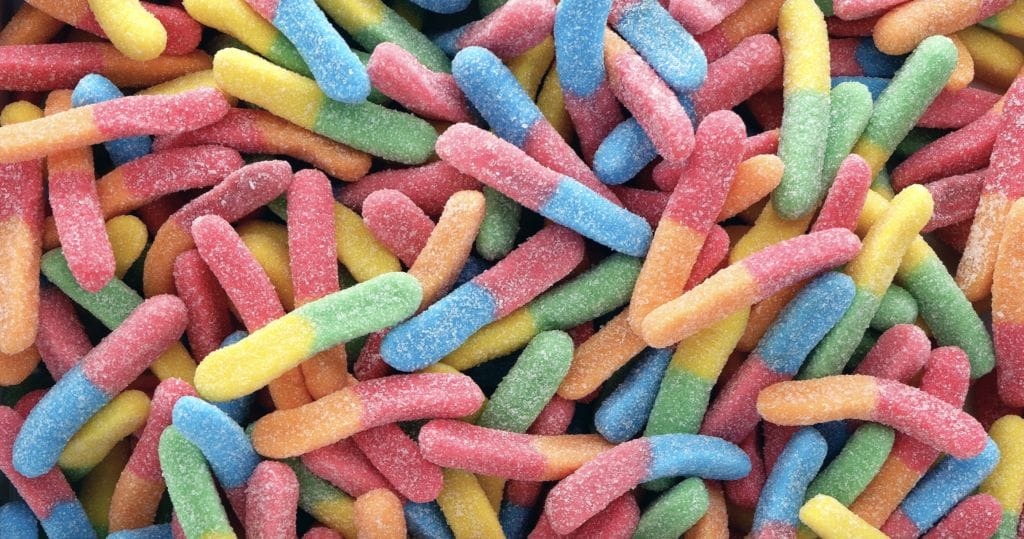“If the data were strong enough to ban Red 3 in cosmetics and external drugs 30 years ago, they’re surely strong enough to ban it today in foods, oral drugs, and dietary supplements.”
Dr. Peter Lurie, CSPI President
The following is an excerpt from The Center for Science in the Public Interest: https://www.cspinet.org
It’s illegal to use the carcinogenic color additive Red 3 in cosmetics, such as lipsticks or blush, or externally applied drugs. Yet the discredited chemical is lurking in common varieties of candy corn, Nerds, Peeps, Pez, SweeTarts, and hundreds of candies, cakes, and other foods, including dozens of seasonal Halloween items.
That’s why the Center for Science in the Public Interest and 23 other organizations and prominent scientists are today urging the Food and Drug Administration (FDA) to formally remove Red 3 from the list of approved color additives in foods, dietary supplements, and oral medicines.
Since the early 1980s FDA had evidence that Red 3 caused cancer in laboratory animals. The National Toxicology Program considered the evidence “convincing.”
”As a result, in 1990, the agency eliminated certain “provisionally listed” uses of the chemical—meaning cosmetics and externally applied drugs.”
In 1990, FDA also said it would “take steps” to ban its use in foods, ingested drugs, and supplements. But those steps were never taken.
“Halloween has never been the healthiest holiday, but few parents would believe that the FDA permits the use of a dye it acknowledges as a carcinogen to be used as a common ingredient in candy,” said CSPI consultant Lisa Y. Lefferts. “Fewer still would believe that the FDA prohibits this carcinogen in makeup but allows it in food.”
Despite the fact that the government concluded that Red 3 causes cancer, food companies continue to use it widely.
A search of Food Scores, a database maintained by the Environmental Working Group, generated 2,876 brand-name food products that contain Red 3—including hundreds of foods made by the country’s biggest food companies.
Candy company Brach’s alone sells more than 100 different candies with the dye. Besides showing up in Pez and Peeps, Red 3 is used in some varieties of Betty Crocker’s Fruit by the Foot, Dubble Bubble chewing gum, Entenmann’s Little Bites, and Hostess’ Ding Dongs.
Long term animal feeding studies show that Red 3 causes adenomas and carcinomas of the thyroid gland. When a substance is shown to cause cancer in animals, it is presumed to cause cancer in humans.
Amendments to the nation’s food laws passed in 1958 and 1960 included a provision called the Delaney Clause which prohibits the approval of any food and color additive if it is shown to cause cancer in people or animals.
For that reason, the petition filed today by CSPI and other groups and scientists says that the FDA is statutorily obligated to delist Red 3.
CSPI’s advice to parents is to avoid not just Red 3, but all numbered dyes, such as Yellow 5 and Red 40. Besides the risk of cancer posed by Red 3, concerns have mounted about the adverse impacts on children’s behavior.
In 2008, CSPI petitioned the FDA to remove those from the food supply as well. Since then, California’s Office of Environmental Health Hazard Assessment has confirmed those dyes cause neurobehavioral problems in some children.
Despite the risks, some prescription drugs still contain Red 3. Vyvanse, billed as the “#1 prescribed branded ADHD medication,” contains it. That’s somewhat ironic, according to CSPI, since the behavioral problems associated with food dyes are often described as similar to the symptoms associated with ADHD.
“FDA has had more than 30 years to ban carcinogenic Red 3—an artificial food color used in many products, including the candy people will be giving out this Halloween,” said Tom Neltner of the Environmental Defense Funds.
“Is the agency red in the face? Not at all. With this color additive petition, we are formally demanding that the agency do its job. The law gives the agency 180 days to make a final decision. Let’s hope that when kids go trick-or-treating next year, FDA will have done its part to make the holiday safer for all.”
Continue reading article here.
Read filed copy of petition here.




I thought it was Red Dye 2 that was banned in the late 70’s….
There are lots of very good natural dyes that could be used as substitutes for these poisonous substances. The vegetable beetroot contains a very good red dye that could be used to color many consumables such as candies and cosmetics, but industry is too conservative to make any moves unless government forces them to do it. With the present cozy relationship between the FDA and industry, with executives moving between the two like they’re the same department, little can be expected to change.